Digital low pressure gauges offering high resolution, multi-unit display, min/max capture, and zero function for critical low-pressure applications.
Digital low-range pressure gauges provide highly accurate and easily readable electronic measurements for pressures typically below 1 bar (approx 15 psi), often displayed in sensitive units like millibars (mbar), Pascals (Pa), or inches of water column (inH2O). Utilizing sophisticated electronic sensors and clear numerical displays, these instruments offer distinct advantages such as integrated unit conversion, superior resolution, and features like min/max capture and zero functions. They are essential tools for precise monitoring and diagnostics in applications ranging from HVAC balancing and cleanroom control to laboratory research, low-pressure gas systems, and hydrostatic level sensing, where clarity and electronic precision are critical.
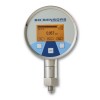 DM01 Multi-Range High Accuracy Pressure Gauge - High precision digital pressure gauge with 0.05% full scale accuracy, exchangeable pressure range modules from 100 mbar (1.5 psi) up to 400 bar (6000 psi).
DM01 Multi-Range High Accuracy Pressure Gauge - High precision digital pressure gauge with 0.05% full scale accuracy, exchangeable pressure range modules from 100 mbar (1.5 psi) up to 400 bar (6000 psi).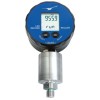 LEO Record (Ei) Capo Low Pressure Logger - Battery powered data logger for measuring and recording low range pressures. Pressure ranges from 30 mbar (12 inH2O) up to 300 mbar (120 inH2O).
LEO Record (Ei) Capo Low Pressure Logger - Battery powered data logger for measuring and recording low range pressures. Pressure ranges from 30 mbar (12 inH2O) up to 300 mbar (120 inH2O).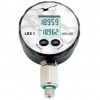 LEX1 (Ei) High Accuracy Digital Pressure Gauge - High precision digital pressure gauge with an accuracy of 0.05% full scale in pressure ranges from 0...30 mbar up to 0...1000 bar.
LEX1 (Ei) High Accuracy Digital Pressure Gauge - High precision digital pressure gauge with an accuracy of 0.05% full scale in pressure ranges from 0...30 mbar up to 0...1000 bar.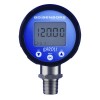 Baroli 02 Precision Digital Pressure Gauge - Precision digital pressure gauge with ranges from 100 mbar (1.5 psi) up to 600 bar (9000 psi) for measuring to an accuracy of 0.125% FS BSL.
Baroli 02 Precision Digital Pressure Gauge - Precision digital pressure gauge with ranges from 100 mbar (1.5 psi) up to 600 bar (9000 psi) for measuring to an accuracy of 0.125% FS BSL.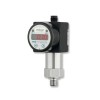 DS210 Combined Low Pressure Switch, Indicator and Sensor - Low range three in one pressure switch, pressure indicator and pressure sensor for use on pneumatics and HVAC applications.
DS210 Combined Low Pressure Switch, Indicator and Sensor - Low range three in one pressure switch, pressure indicator and pressure sensor for use on pneumatics and HVAC applications.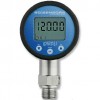 Baroli 02P Low Range Flush Diaphragm Digital Pressure Gauge - All stainless steel 316L hygienic digital display pressure gauge for measuring low range pressures with ranges from 0-100 mbar up to 0-40 bar.
Baroli 02P Low Range Flush Diaphragm Digital Pressure Gauge - All stainless steel 316L hygienic digital display pressure gauge for measuring low range pressures with ranges from 0-100 mbar up to 0-40 bar.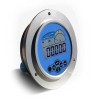 ADT681 Digital Pressure Gauge - The ADT681 digital pressure gauge family covers a wide range of pressures from as low as 1 inH20 differential to as high as 36,000 psi gauge.
ADT681 Digital Pressure Gauge - The ADT681 digital pressure gauge family covers a wide range of pressures from as low as 1 inH20 differential to as high as 36,000 psi gauge.
Find out more about Low Range Pressure Gauges to determine which product options and capabilities will best meet your application requirements.
Low-range pressure gauges are specifically designed for applications demanding precise measurement and monitoring of pressures significantly below standard industrial ranges, commonly operating below 1 bar (approx 15 psi) and often scaled in sensitive units like millibars, Pascals, or inches of water column. These instruments utilize electronic sensor technology coupled with a digital display to provide clear, unambiguous numerical readings, essential for applications where even minor pressure variations are critical. They offer enhanced readability and often superior resolution compared to traditional mechanical gauges, making them ideal for testing, diagnostics, and continuous monitoring tasks requiring high fidelity at low pressures.
The core of a low-range pressure gauge is an electronic pressure sensor, frequently employing technologies such as piezoresistive or capacitive sensing elements. These sensors are engineered for high sensitivity, capable of detecting minute pressure changes exerted by the process medium (air, gas, or liquid). The sensor converts the detected pressure into an electrical signal, which is then processed by internal microelectronics and presented as a precise numerical value on the liquid crystal display (LCD) or similar digital screen. This direct electronic transduction eliminates the mechanical linkages found in analog gauges, contributing to potentially higher accuracy and resistance to shock or vibration.
A significant advantage of digital low-range pressure gauges lies in their inherent flexibility regarding pressure units. Most digital models feature integrated unit conversion, allowing the user to easily cycle through and display readings in various relevant units such as mbar, Pa, hPa, kPa, psi, inH2O, mmWC, and others with a simple button press. This eliminates the need for manual conversions and reduces the risk of errors, especially when working across different systems or standards. The clear digital display also removes parallax error and ambiguity associated with interpreting needle positions on an analog scale, providing precise readings often to multiple decimal places, enhancing the effective resolution.
Beyond the basic readout, digital low-range gauges often incorporate valuable additional features. Backlit displays are common, ensuring readability in poor lighting conditions. Many models include a min/max capture function, which records the lowest and highest pressures sensed over a period, invaluable for diagnosing intermittent pressure spikes or drops. A zero or tare function allows users to null the display at ambient or a reference pressure, facilitating differential pressure measurements (using a single gauge sequentially) or compensating for small offsets. Some advanced digital gauges may also offer data logging capabilities or provide analog or digital output signals for integration into larger control or data acquisition systems.
In practical applications, digital low-range gauges excel where clarity and precision are paramount. Within HVAC systems, they provide easily readable measurements of filter pressure drops, duct static pressures, and fan performance, with min/max functions helping to identify system irregularities. For cleanroom environments demanding strict pressure differentials, the high resolution and clear display of measurements in Pascals or inH2O, coupled with potential alarming features on some models, ensure accurate monitoring and control of contamination pathways. The zero function is particularly useful here for establishing precise differentials relative to adjacent spaces.
Similarly, in laboratory settings, industrial processes, and field diagnostics, digital low-range gauges offer reliable monitoring of low gas supply pressures, precise leak testing through observation of pressure decay, burner efficiency checks, and control of low-pressure pneumatic systems. Their application extends to liquid level measurement in open tanks via hydrostatic pressure, where the digital display provides a direct, easily logged depth indication (when scaled appropriately). The robustness of electronic sensors compared to delicate mechanical movements can also be an advantage in environments subject to vibration or movement.
Selecting the right digital low-range pressure gauge involves evaluating the required pressure range, ensuring sufficient resolution for the application’s sensitivity needs, and carefully checking the manufacturer’s accuracy specifications. As with any gauge, confirming material compatibility of the wetted parts (sensor housing, diaphragm) with the process media is crucial. Additionally, considerations specific to digital instruments include the power source (battery type and expected life, or requirements for external power), the environmental operating conditions (temperature, humidity limits), and whether advanced features like data logging or output signals are necessary for the intended task.
